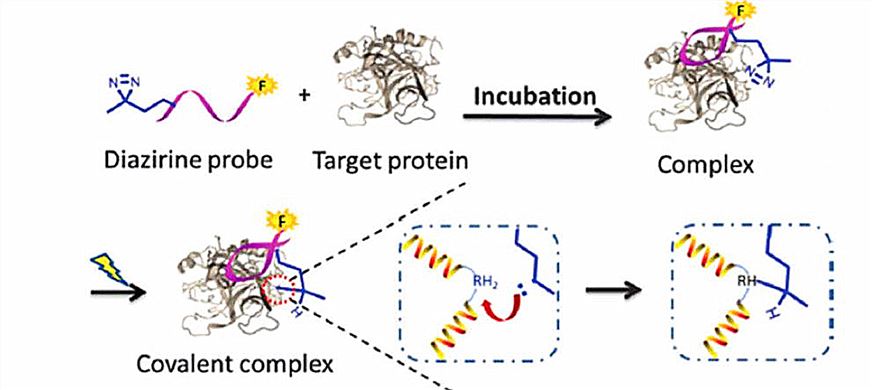Photoaffinity Labeling (PAL)
With the commitment of being your best drug discovery partner, Creative Biolabs is capable of providing our clients with a variety of customized services in photoaffinity labeling (PAL) for target identification and protein function analysis. Equipped with a team of professional scientists, we have won a good reputation among our worldwide customers for successfully accomplishing numerous challenging projects in this field.
Introduction to Photoaffinity Labeling (PAL)
Photoaffinity labeling (PAL) has been regarded as a powerful tool for identifying candidate targets and specific molecules in drug discovery. In general, PAL can be widely used to covalently bind a number of chemical tags to different types of proteins, and ultraviolet light is commonly used to active a motif of the active sites in various proteins. Pilot studies have shown that PAL plays an important role in studying protein-protein interactions (PPIs) in the process of drug discovery. The results suggest that PAL can monitor a wide collection of proteins without triggering side effects or inhibiting their functions in disease therapy. Meanwhile, recent research have demonstrated that photocrosslinking has become a perfect technique for detecting the biological functions of proteins in chemical proteomics. A series of photocrosslinkers, such as benzophenone (BP), have been developed for capturing direct covalent or noncovalent modification in proteins. For example, BP is one of the most popular photocrosslinkers because it has high affinity and less protein damage in studying PPIs both in vitro and in vivo.
 Fig. 1 Photo-initiated efficient covalent coupling of diazirine modified aptamer probe with its target protein.1
Fig. 1 Photo-initiated efficient covalent coupling of diazirine modified aptamer probe with its target protein.1
Our Services for Photoaffinity Labeling (PAL)
The covalently binding of PAL to specific targets has shown promising data in drug discovery for novel candidate drugs and potential binding sites. It has a high photolabeling efficiency and stability, a broad wavelength range, as well as a minimal protein structure damage in many biological systems. Currently, Creative Biolabs offers a diverse range of PAL services to analyze the PPIs of drug targets and molecules in drug development. Photocrosslinkers, including aryl azides (AZs), diazirines (DAs), are available for identifying the binding proteins by the chemical capture. In a recent study, we have developed a BP-alkyne-triethylammonium (BPyneTEA) probe to bind with nicotinic acetylcholine receptors (nAChRs) and BP for PAL analysis. In addition, we have also conducted a structure-activity relationship (SAR) study of BP photo ligands for Lck kinase. The results indicate that the conformation of BP ligands is critical to improving the labeling efficiency in PAL assays.
Service Highlight
- Multiple and well-established PAL platform
- Fast turnaround time
- Efficient and cost-effective process
- Reliable data analysis
Creative Biolabs is a leader in the field of target identification and protein-to-protein interaction for years. With in-depth expertise in molecular modeling, structural analysis, PAL studies, as well as drug evaluation, we offer a high throughput drug screening service basing on a full range of state-of-art technologies. If you are interested in our services, please contact us for more details. Let us know what you need and we will accommodate you. We look forward to working with you in the future.
Reference
- Murale, D. P., et al. Photo-affinity labeling (PAL) in chemical proteomics: a handy tool to investigate protein-protein interactions (PPIs). Proteome Sci. 2017, 15: 14. Distributed under Open Access license CC BY 4.0, without modification.
For Research Use Only.
